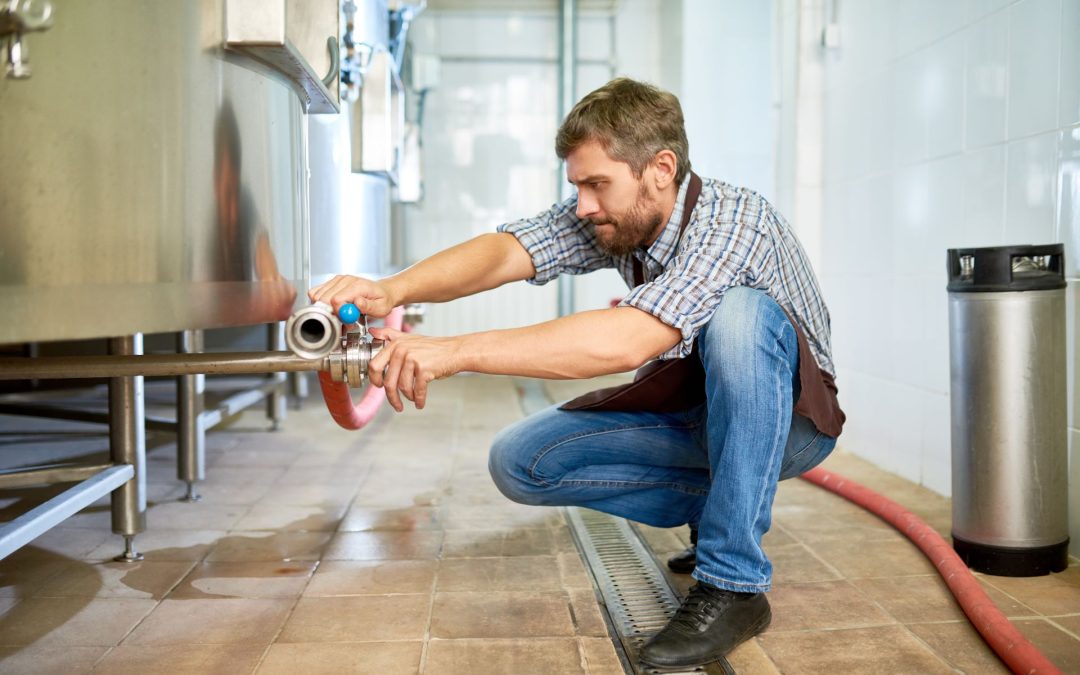In the bustling world of businesses, encountering a plumbing issue is more than just an inconvenience; it can disrupt operations and lead to significant financial losses. We understand the critical nature of maintaining an efficient plumbing system, which is why we’re here to guide you through the nuances of commercial plumbing troubles. Plumbing complications can arise from various scenarios—be it aging pipes, incorrect installations, or simply the everyday wear and tear—each presenting unique challenges to the smooth operation of your business.
At our core, we’re dedicated to ensuring you can identify and address these issues promptly. The ability to recognize common signs of plumbing failures not only saves time but also helps mitigate the damage caused by delays in repairs. Moreover, knowing when the situation is beyond a simple fix and requires professional intervention is crucial for maintaining your system’s integrity and functionality. In this discussion, we’ll guide you through essential troubleshooting techniques and illustrate when it’s time to call us—the experts—to handle the more complex issues securely and efficiently.
Common Signs of Commercial Plumbing Issues
Recognizing the early signs of plumbing issues in commercial buildings is crucial for maintaining operations and avoiding disruptions that can affect your business. One common indicator is water discoloration, which often points to pipe corrosion or sediment build-up. If you notice unusual colors in your water, it’s essential to address it swiftly. Another frequent issue is persistent clogs or slow drains throughout your building. This could signify a deeper blockage in the main sewage line, affecting all connected fixtures. Additionally, if there are any unusual sounds like banging or whistling from the pipes, it usually means there’s air trapped in the lines, or the water pressure needs adjusting. By keeping an eye out for these signs, you can catch and manage minor issues before they turn into bigger, more costly problems.
Step-by-Step Guide to Troubleshooting Low Water Pressure
Experiencing low water pressure can be frustrating, especially when it disrupts daily operations like washing, cleaning, and sanitation. However, troubleshooting this issue can often be straightforward if you know the right steps to take. First, check if the low pressure is affecting both the hot and cold water, as this can help pinpoint whether the issue is with a heater or a mainline. If the problem is isolated to certain fixtures, cleaning the aerators or showerheads to remove any sediment build-up can often resolve the issue. Alternatively, inspect for any visible leaks in your premises. Leaks can divert water away from where it’s intended, significantly reducing pressure. If these steps don’t resolve the problem, examining the pressure regulator, if your building has one, can be your next step. Adjusting it might restore proper pressure levels, but if it’s faulty, replacing it would be necessary. Remember, systematic troubleshooting can save you from unnecessary complications and ensure your plumbing system operates efficiently.
Top Tools We Use for Diagnosing Plumbing Problems
In our ongoing commitment to provide outstanding service, we equip our team with the latest tools to diagnose any plumbing issue accurately. The use of high-tech equipment allows us to detect and resolve problems efficiently, minimizing disruption to your daily routine. One such indispensable tool is the video inspection camera. This device is crucial for visually inspecting pipes and other hard-to-reach areas of your plumbing system, helping us identify obstructions, cracks, or other anomalies. Another critical tool is the water pressure gauge. We use this to measure water pressure throughout various points of your system, ensuring everything operates within safe and effective parameters. These tools, along with others like moisture meters and digital pipe locators, empower us to provide thorough and precise assessments, ultimately saving you time and money.
When to Call a Professional Plumber: Warning Signs You Shouldn’t Ignore
Being alert to changes in your plumbing system can catch potential problems before they escalate into major issues. However, there are certain warning signs that should prompt an immediate call to us. Persistent drips or leaks, for example, can signify deteriorated fixtures or larger issues within your plumbing system. Another red flag is any kind of water discoloration, which could indicate rust or decay in your pipes. Perhaps more urgently, any sign of water where it shouldn’t be — such as puddles under pipes or damp drywall — can indicate leaks that have the potential to cause structural damage to your property. Also, be aware of unexplained spikes in your water bills, which could be caused by hidden leaks draining your resources. If you notice any of these signs, it’s essential to call us swiftly for a professional inspection and necessary repairs.
Conclusion
Ensuring the functionality and efficiency of your plumbing system is crucial, not just for the convenience it offers but also for the safety and structural integrity of your property. Whether it’s upgrading your kitchen faucet or addressing commercial plumbing concerns, we are here to help. Leveraging our expertise and armed with top-notch diagnostic tools, we guarantee that we will address and resolve your plumbing needs effectively. Remember, recognizing and acting on the early signs of plumbing problems can save you from costly repairs and replacements down the line.
If you’re experiencing any commercial plumbing issues or if you’re considering a plumbing upgrade, don’t hesitate to reach out to Midlothian Plumbing. Our team of expert plumbers is ready to provide you with the quality service you deserve to ensure your plumbing system functions seamlessly and efficiently.


